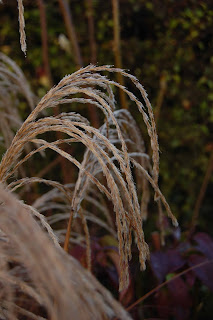An early Thursday morning start in Cambridge this week to set up my market stall in the city centre and I'm not the only early bird around. People on the delightful veg stalls on the market are already setting out tempting displays of lovely fresh fruit and vegetables, with many items sourced locally; there is a nose twitching waft of freshly baked bread from that stall, mingling with freshly cooked bacon from the market cafe. The pavements are being thoroughly cleaned outside the Guildhall which overlooks the historic market and as I begin to unload my gardening and home products for my own stall, the fish van from Lowestoft has just turned up with an amazing selection of fresh and smoked seafood, including Brancaster mussels and the best smoked kippers I've ever had - and it's not even seven o'clock yet!
But wait, there's someone else turning up in vans and ooh look, a big Christmas tree has appeared overnight next to the Guildhall! Excitement mounts as market traders get into a festive mood, looking up in glee as we set out our stalls, as we realise what the men in the vans are doing - putting the lights on the Christmas tree.
Now, this can be a tricky project, especially with a tree that big so if you find yourself wondering how the lights go on a large Christmas tree and you want to be as accomplished as the team from Cambridge City Council who put them on today, here is my easy eight point plan to follow:
1. Arrive early to get the best parking spot next to the tree and also helpful if shops are closed and no one is shopping
2. Lay the lights out and check all the bulbs are working, replacing any that are not before you put the lights on the tree
3. Starting at the bottom, wind the string of lights all the way around the tree. [This is obviously where I go wrong at home with a somewhat smaller tree, as I start putting the lights on at the top!]
4. Get lots of help to put the lights on, it's a big tree remember
5. For those tricky places where you can't reach the tree, stand on something solid and stable to position the lights. Don't forget to wear a hard hat and a dashing hi-viz jacket as this will not only make you look very important, it will keep the Health & Safety people happy, too
6. Then get someone else to do this on the other side of the tree
7. Or even do both sides together as it saves time
8. Make sure you get all the tree covered in lights, even the top bit
Et voila - sorted, one Christmas tree with lights!
The big switch on in Cambridge is this Sunday, 20th November, with apparently a 'packed programme of entertainement' expected on the day (according to the local media) in the market square: the Christmas tree will sparkle with its beautifully positioned lights when all the Christmas lights get switched on from the Guildhall at 4pm.














































